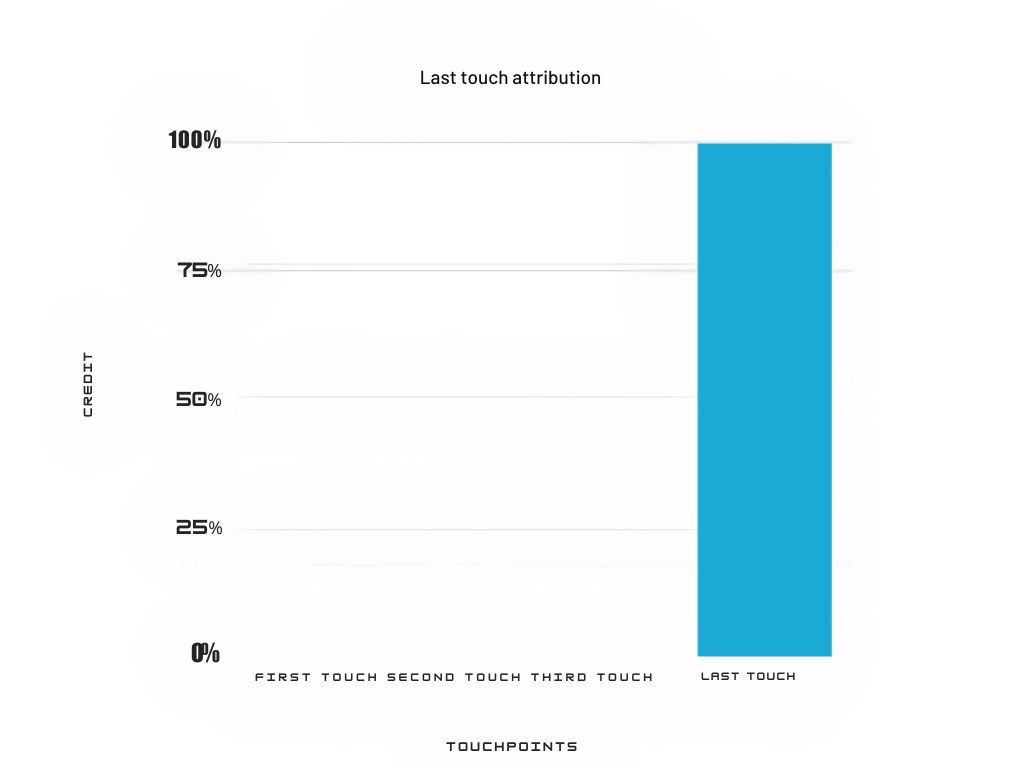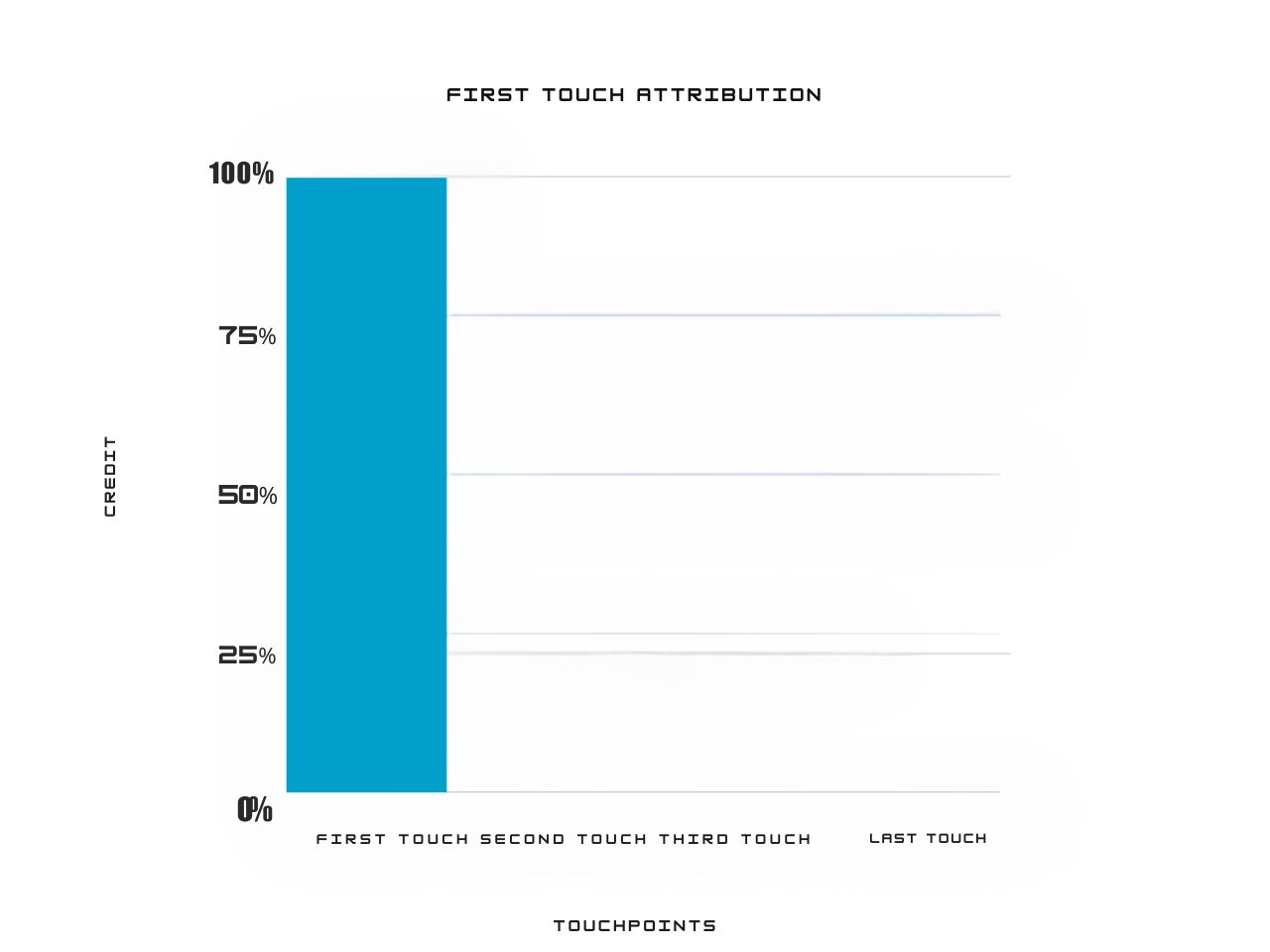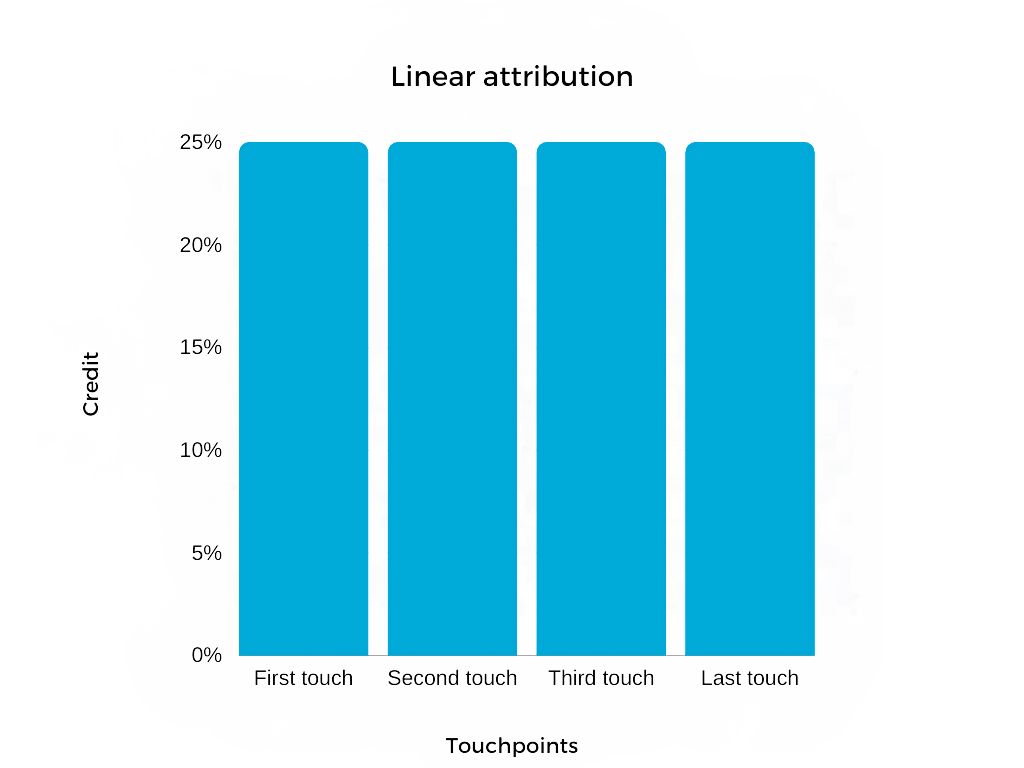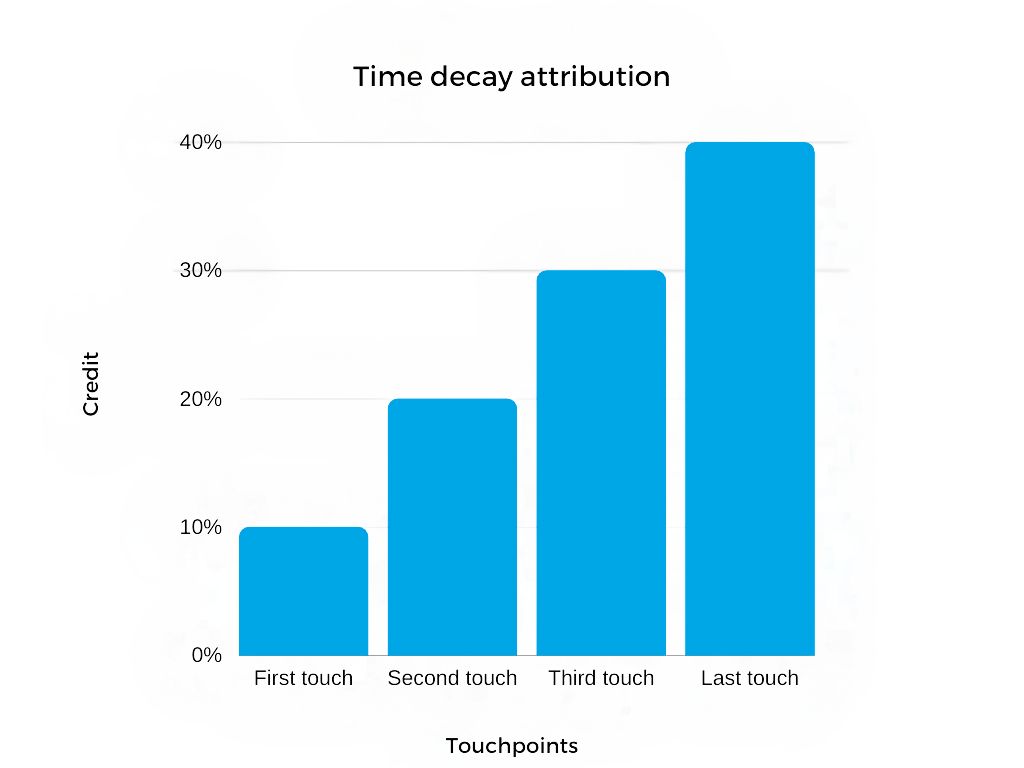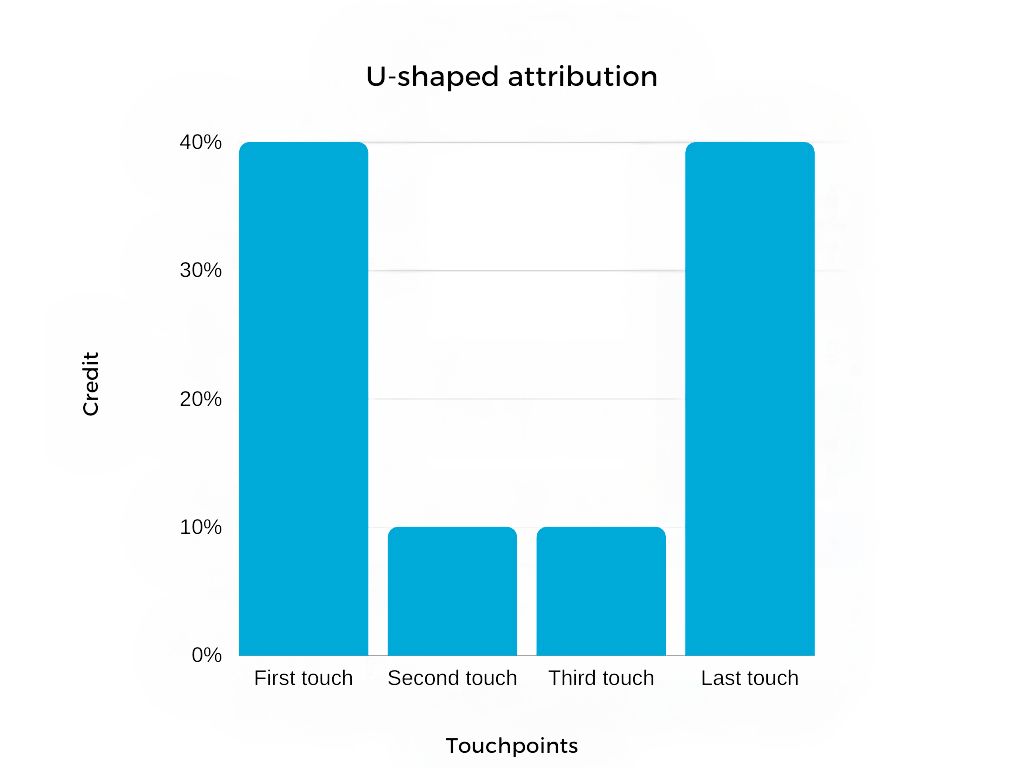John Wanamaker, a Philadelphia merchant in the early 1900s, famously quipped, “Half the money I spend on advertising is wasted; the trouble is I don’t know which half.”
His poignant lament resonated across generations and captured the struggle marketers face in gauging the impact of their efforts.
Fast forward to today, and this sentiment has developed into a sophisticated science known as lead attribution.
Unlike Wanamaker’s blindfolded approach, lead attribution brings clarity to a buyer’s customer journey by tracking every touchpoint leading up to a conversion.
This granular understanding of “what worked” and “what didn’t” allows marketers to decide where to allocate resources and drive sales growth.
If you’re unfamiliar with the concept this guide to lead attribution is for you. I’ll explain the basics of lead attribution and explore several popular lead attribution models.
Let’s get into it!
What is Lead Attribution?
Lead attribution is a specialized form of marketing attribution that allows you to determine which marketing channels are best for you and which strategies are responsible for generating leads.
For example, let’s say a potential customer sees a video ad for your new fitness watch on social media.
The ad piques their interest, and they click through to your website to learn more.
After browsing the features and benefits, they decide to subscribe to your email list for exclusive discounts and updates.
In this case, your social media video ad gets credit for the lead, as it was the initial touchpoint that sparked their curiosity and led them to your website.
Various analytics platforms offer the ability to create lead attribution models.
But first, let me tell you why you should use lead attribution.
Why is Lead Attribution Important?
Is your social media strategy yielding great results or draining your budget? Does your website convert visitors or simply amuse them?
It’s common for users to have multiple touchpoints before converting into leads.
However, without lead attribution, the customer journey remains dark, leaving you unable to see which touchpoints convert strangers into leads and loyal customers.
Here are some of the reasons why lead attribution is important for your business.
1. Understanding Your Customer Journey
The customer journey is rarely a straight line—it’s a winding path with multiple touchpoints before reaching that crucial moment of purchase.
Lead attribution helps you map this journey, pinpointing the triggers that lead to conversions.
Knowing these critical moments gives you invaluable insights into how your customers interact with your brand.
2. Gaining Faster Data-Driven Insights
We no longer have to deal with the challenges of working with isolated data and disjointed reports.
Lead attribution is a bridge that consolidates data from various marketing channels, such as social media metrics (brand mentions, click-through rates), advertising analytics and web analytics (form submissions, page views).
This enables you to create a cohesive representation of your customer journey, facilitating the analysis and extraction of practical insights.
With this holistic view, you can easily identify trends, make data-driven decisions faster, and respond to customer behavior with agility.
3. Providing Personalized Lead Insights
Lead attribution looks at more than just the big picture; it looks at the details of each lead.
Watching the specific touchpoints that led each customer to your sales funnel closely gives you helpful information about their wants and needs.
With this personalized understanding at your disposal, you have the power to customize your marketing efforts for each customer segment.
4. Improving Your ROI
You can allocate resources more effectively by revealing the channels and campaigns that successfully influence your customers.
For example, you might discover that your paid search campaigns consistently generate leads with a higher conversion rate compared to your organic social media efforts.
This insight allows you to shift the budget and focus on optimizing the high-performing channels, leading to increased conversions and a better ROI.
Conversely, if you spend a lot of money on PPC ads and find that leads are coming from your blog posts instead of paid ads, hit the pause button. You might want to rethink how you use your marketing resources to get the best return on your money.
Ready to take control of your marketing outcomes with lead attribution?
Contact Growth Hackers
Lead Attribution Models
Lead attribution models serve as frameworks for assigning credit or value to different marketing touchpoints that contribute to lead or customer conversions.
The objective is to comprehensively understand the most impactful marketing strategies and allocate resources accordingly.
There are different types of lead attribution models you can use to allocate credit for leads to specific interactions and marketing channels.
Below, I will examine the various attribution models in greater depth.
Let’s get started.
1. Last-Touch Attribution
Last-touch attribution gives all the credit for a conversion to a lead’s final interaction with your company. It’s easy to use, especially on CTAs and campaigns that directly drive leads.
However, it ignores the influence of earlier touchpoints in the customer journey, potentially undervaluing their role.
For instance, if a customer sees a social media ad, reads a blog post, and finally fills out a contact form after clicking an email offer, the last-touch attribution model would credit the email for the lead. It’ll overlook the other steps that nurtured their interest.
2. First-Touch Attribution
In first-touch attribution, the very first interaction a lead has with your brand is awarded full credit for the eventual conversion, even if other touchpoints played a crucial role.
Let’s say a customer sees your company’s banner ad while browsing a news website (first touch), later reads an in-depth blog post on your website, and finally signs up for your free trial after receiving a targeted email offer.
Under first-touch attribution, the initial banner ad would receive all the credit for generating the lead, despite the nurturing influence of the blog post and email campaign.
This model prioritizes acknowledging the initial spark of brand awareness but underestimates the importance of subsequent interactions that guide and convince a lead toward conversion.
While it helps identify successful awareness campaigns, it should ideally be used in conjunction with other attribution models for a more complete picture of the customer journey.
3. Linear Attribution
When it comes to linear attribution, every lead interaction with your brand, from first contact to conversion, receives equal credit. The model shows the customer journey, but it doesn’t tell you which touchpoints pushed the lead over the edge.
For instance, say a prospect sees a social media ad about the ultimate SEO strategy this year. They then click on a website banner, read a blog post, and finally make an inquiry after an email offer.
Linear attribution would give each touchpoint 25% of the credit, even though the email might have been the final nudge that led to the conversion, as shown below.
4. Time Decay Attribution
Unlike the linear model, which credits all touch points equally, the time-decay model gives more weight to interactions closer to lead generation.
It recognizes that while every touchpoint plays a role, the final stages deserve the most credit as it has the most immediate impact on conversion.
This prioritization helps optimize the journey of potential customers toward becoming leads.
It gives more weight to recent interactions, assuming earlier ones have diminishing influence as time goes by. This model is ideal for businesses with short sales cycles where recent actions have the strongest sway.
For example, if a customer first sees an ad about lead generation, then reads the blog post on how to find sources of generating sales, and finally takes an action, the time-decay model would give most credit to the blog post.
It’s closest to the conversion, followed by the ad. Although it acknowledges the initial ad exposure, it prioritizes the touchpoint that directly influenced the purchase decision.
Track your marketing success – master lead attribution today!
5. U-Shaped (or Position-Based) Attribution
The U-shaped model, aka position-based attribution, gives special attention to the bookends of a customer’s journey—the first and last touchpoints.
It recognizes that these interactions hold the most weight, with the first sparking initial interest and the last influencing the final decision.
For every conversion, the first and last touchpoints get 40% each, and the other 20% is split between the middle interactions
This approach reveals where you hook customers and turn them into loyal ones, making it valuable for businesses with longer sales cycles.
For instance, say a customer finds your brand through a social media post, explores your website later, and finally buys a product after seeing an email offer. T
The U-shaped model would give equal credit to the social media post that started their journey and the email that sealed the deal, while also acknowledging the website visit’s influence.
Now, choosing the right lead attribution model is important. However, you can also use various attribution models to gain a more thorough grasp of the customer journey and the significance of different touchpoints.
Closing Thoughts on Lead Attribution for Digital Marketing Data Analysis
While lead attribution offers valuable insights, treat it as a guide, not an absolute truth.
Gather additional data, like user-submitted sources, to gain a more comprehensive picture of your marketing effectiveness.
Combine attribution reports with other methods to avoid over-reliance and identify all sources driving conversions.
Doing so will ensure you get the full picture, and you will be able to identify the exact sources and the untrackable platforms that are leading people to consider and buy from your business.
Growth Hackers is one of the top lead generation agencies helping businesses from all over the world grow. There is no fluff with Growth Hackers. We help entrepreneurs and business owners maximize their ROI by mastering lead attribution, increase their productivity, generate qualified leads, optimize their conversion rate, gather and analyze data analytics, acquire and retain users and increase sales. We go further than brand awareness and exposure. We make sure that the strategies we implement move the needle so your business grow, strive and succeed. If you too want your business to reach new heights, contact Growth Hackers today so we can discuss about your brand and create a custom growth plan for you. You’re just one click away to skyrocket your business.


